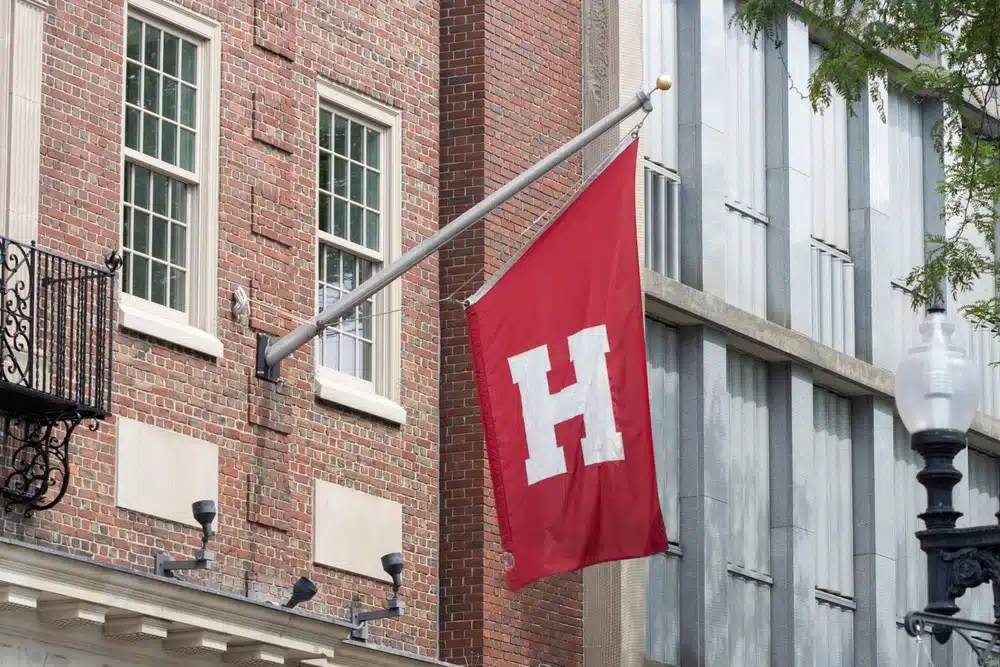Where is Harvard Located?
One of the world’s top-ranking and oldest educational institutions, Harvard University, radiates its prestigious aura from the heart of the United States. This comprehensive guide looks at where Harvard University is located and how it contributes to its rich history and international standing.
Where is Harvard Located?
Harvard University is in Cambridge, Massachusetts, providing an ideal intellectual growth and cultural engagement setting. Right in the heart of Cambridge and just a stone’s throw from Boston, Harvard sits at 1350 Massachusetts Ave., giving you a world of opportunities to enrich your student life.
The cultural scene in Cambridge and Boston allows for a broad engagement in the arts, from theaters to museums. With various student organizations, you’ll find communities that share your interests, providing a balanced and enriching college life. Proximity to Boston enhances your Harvard experience with access to professional opportunities in technology, healthcare, and finance. Practical experiences through internships and seminars in Boston complement your studies, preparing you for your career.
Is Harvard private or public?
Harvard University is a distinguished Ivy League school that operates independently as a private institution. It sets its course in academics, research, and student engagement without state government funding, relying instead on tuition, contributions, and its large endowment. This setup allows Harvard to provide various programs and uphold its reputation for excellence.
Academic Challenges
Harvard’s curriculum is rigorous, and leading scholars, including Nobel laureates and Fields Medal winners, teach it. This environment tests students’ intellectual capabilities and prepares them for leadership roles in their future careers.
Libraries and Research
Harvard is home to the world’s largest academic library system, boasting over 18 million volumes. You’ll have access to rare manuscripts and a vast selection of digital resources designed to support your academic and research needs.
Dedication to Advancing Knowledge
The university is actively involved in research that addresses global challenges in health care, technology, and public policy. Students are encouraged to participate in these projects, applying their knowledge to solve real-world problems.
A Brief History of Harvard
Harvard University, founded in 1636 and located in Cambridge, Massachusetts, is the oldest institution of higher learning in the United States. It began with a mission to educate clergy but quickly expanded its focus to include diverse academic disciplines. This expansion showcases Harvard’s ability to adapt and lead in education.
Broadening Academic Horizons
Harvard, named after its first benefactor, John Harvard, initially focused on religious studies. By the 18th century, it had incorporated languages, mathematics, and sciences into its curriculum, reflecting the broader intellectual movements of the time.
Embracing Change in the 19th Century
In the 19th century, Harvard underwent major transformations, especially under the leadership of President Charles William Eliot. He introduced elective courses and strongly focused on research, moving Harvard towards a more inclusive education model. This period also witnessed the birth of Harvard’s professional schools, diversifying its educational offerings.
Strengthening Global Leadership
Throughout the 20th and into the 21st century, Harvard enhanced its position as a leading global institution. Known for groundbreaking research and promoting academic freedom, Harvard has been key in addressing global challenges and fostering a diverse academic community.
How big is the Harvard campus?
Harvard University is known for its academic prowess and its large campus. Reflecting its history and innovation, the campus occupies about 5,000 acres in Massachusetts, including a mix of facilities catering to its academic community.
Campus Overview
Harvard, strategically located to encompass three main areas: the historic Harvard Yard, the Allston campus, and the Longwood Medical Area, boasts a campus rich in diversity and academic opportunities. Harvard Yard, the academic core, hosts the oldest buildings and the central administration.
The Allston campus is a hub for research and development, expanding Harvard’s science and engineering capabilities. The Longwood Medical Area, dedicated to health sciences, houses the Harvard Medical School and related institutions.
Architectural Diversity and Green Spaces
The campus architecture balances historical preservation with modern design. Harvard Yard’s colonial-era buildings contrast with the modern structures in Allston, creating a unique environment where the old meets the new.
The campus also features green spaces like the Arnold Arboretum, contributing to its aesthetic and sustainability.
A Resource Hub
Harvard’s campus is notable for its extensive resources for learning and research. It boasts well-equipped libraries and research centers, offering access to a wide range of academic materials and opportunities for groundbreaking research.
What are the available facilities inside Harvard?
Harvard University provides extensive facilities tailored to its community’s needs, supporting academic, athletic, and personal development goals.
1. Academic and Research Facilities
The Faculty of Arts and Sciences at Harvard offers equipment and technologies for research across disciplines. Resources include flow cytometry, sequencing, nanoscale systems, genome modification, biological imaging, and mass spectrometry, enabling top-tier research.
2. Athletic and Fitness Resources
Harvard’s athletic and fitness facilities are open to everyone, offering gyms, sports courts, pools, and tennis courts at accessible rates. Facilities like the Malkin Athletic Center and Hemenway Gymnasium provide various activities. Classes in cycling, Zumba, yoga, and others are available, promoting health and community. Harvard’s medical plans also offer up to $150 annually for gym memberships and fitness equipment.
3. Campus Maintenance Services
A team of over 500 manages the facilities and landscapes located at Harvard, ensuring well-maintained facilities. Services cover classrooms, labs, libraries, museums, recycling, waste management, and event support.
4. Additional Campus Life Services
Harvard offers diverse services, including dining, commuter options, ID cards, mail services, and parking. The university focuses on sustainability and efficient operations, enhancing the campus experience. Harvard’s facilities and services are designed to support your academic, athletic, and personal growth, ensuring a conducive environment for success.
What is Harvard known for?
Harvard, the oldest higher education institution in the United States, is known for its academic excellence and selectivity. It combines top-tier academics, rich traditions, and a supportive community.
1. Academic Excellence
At Harvard, you can learn from Nobel laureates and Pulitzer Prize winners. The university promotes interactions between faculty and students. Focusing on liberal arts and sciences, Harvard aims to enhance your critical thinking and communication skills. Its curriculum encourages you to apply your knowledge to global challenges.
With over 3,700 courses in over 50 majors and numerous minors, Harvard lets you customize your academic journey. You can design special majors or pursue dual-degree programs with leading music institutions. Harvard’s commitment to research and global engagement is clear in its research environment and study abroad programs.
2. Student Life and Traditions
Harvard has over 450 student organizations and 42 Division I sports teams. Traditions like “The Game” against Yale and Yardfest contribute to community spirit.
3. Living at Harvard
Your experience begins in Harvard Yard, leading to one of 12 Houses that offer communal living. These Houses are centers for dining, socializing, and academic support, creating a close-knit community.
4. Support and Resources
Harvard’s financial aid program is inclusive, offering need-blind admissions and meeting all demonstrated financial needs. This approach makes Harvard accessible to students from various financial backgrounds. The university’s libraries, museums, and research facilities support your academic work.
5. The Cambridge and Boston Experience
Harvard’s location includes cultural, academic, and recreational activities. This environment enhances your experience, offering a stimulating setting for personal growth and academic achievement.
What is outside the Harvard campus?
Harvard University is the crossroads of education, community engagement, cultural happenings, and creativity. Here, we’ll guide you through Harvard’s public spaces, such as the Science Center Plaza, Harvard Yard, the Porch, and the Patio, showing how these areas enhance campus life by promoting social interaction, cultural engagement, and personal well-being.
1. Science Center Plaza
The Science Center Plaza, located between Harvard Yard and the Science Center, is a hub of university life. It hosts activities appealing to the Harvard community’s diverse interests. The Plaza is the venue for the annual Arts First Festival, celebrating creativity, and the Farmers’ Market, supporting local businesses.
Weekly concerts offer a musical break from academics. Food trucks provide a taste of regional cuisine. The Plaza also becomes a recreational area with ping pong tables, giant chess sets, and unique activities like petting zoos and chair massages, making it a key spot for community interaction.
2. The Chairs in Harvard Yard
The Luxembourg Chairs in Harvard Yard symbolize Harvard’s approach to community building. Their mobility supports outdoor classrooms, discussions, or performances. This flexibility encourages you to reshape your environment, enriching the university’s social landscape.
3. The Porch
The Porch at Memorial Church offers a spot for coffee breaks or study sessions, surrounded by Harvard Yard’s beauty. It’s a place for peaceful gatherings, offering a setting for conversation that respects Harvard’s history and traditions.
4. The Patio
The Patio becomes a retreat in warm weather. Its layout, with comfortable seating and shade sails, creates an inviting atmosphere for meetings, projects, or relaxation. The Patio reflects Harvard’s commitment to outdoor spaces that support academic and personal growth, offering a setting for reflection and community building.
Harvard’s Dorms and Other Housing Options
Beyond classrooms and libraries, Harvard offers a mosaic of study spots, relaxation areas, and a unique living experience with peers, all located within its historic campus. These moments, from study sessions to shared meals, create a sense of belonging. Let’s look at the housing options at Harvard.
First-Year Dorms
Your Harvard journey begins in dorms around Harvard Yard, designed with shared suites at the center of freshman life. Close to classes and Annenberg Hall for dining, this area is a hub for meeting the diverse community.
Dorms are grouped into clusters—Crimson, Elm, Ivy, and Oak—each a community within Harvard—activities designed to ease your college transition range from academic workshops to social events.
Freshman Living Arrangements
Upon arrival, you’re assigned to suites, from doubles to larger accommodations. Most students share bathrooms, promoting community.
You’ll join an entryway group overseen by a proctor who supports you. These groups are communities, hosting events that build friendships.
The First-Year Experience Office (FYE)
The First-Year Experience Office ensures a smooth college transition, overseeing freshman life. The FYE organizes programs that enhance academic and social life and provides academic advising.
Sophomore Year and Beyond
At the end of freshman year, Housing Day assigns you to a house for the next years. Whether in one of Harvard’s 12 Houses or the Dudley Community, you’ll find a new home. Each House offers dining, academic resources, and events, ensuring a supportive community.
House Renewal
Harvard is updating its Houses to meet modern needs while keeping their historical charm. This effort shows Harvard’s commitment to spaces that support academic and personal growth.
What is Harvard’s impact on Cambridge?
Harvard University shapes Cambridge, Massachusetts, through direct interactions and contributions. Its influence on the local economy, culture, education, and community is significant, but it also brings challenges.
Economic Contributions
Harvard University, located in Cambridge, significantly affects the local economy. The Harvard Innovation Labs (i-lab) supports entrepreneurship, assisting students and alumni in starting new ventures and enriching the local economy.
Startups in the biotech sector highlight Cambridge’s role as an innovation hub. The vibrant commercial scene around Harvard Square, with entities like the Harvard Book Store, illustrates the symbiotic relationship between the university and local businesses.
Cultural and Community Contributions
The Harvard Art Museums, which include the Fogg, Busch-Reisinger, and Arthur M. Sackler Museums, contribute to Cambridge’s cultural scene by hosting educational programs and exhibitions that attract visitors from around the globe.
Harvard also enhances the local community through public lectures, performances, and conferences. Its environmental lecture series promotes sustainability discussions, contributing to Cambridge’s cultural and intellectual engagement.
Educational and Research Advancements
Harvard’s partnerships in healthcare and medical research, especially with the Broad Institute of MIT and Harvard, have led to significant advancements in medical science. Through initiatives like the Harvard Ed Portal, collaboration with the Cambridge Public School district shows Harvard’s engagement in local education, providing resources, mentoring, and scholarships to improve education quality.
Addressing Challenges
Harvard’s expansion has benefits and challenges, affecting housing affordability and community dynamics. The university’s housing initiatives aim to moderate the impact on Cambridge’s housing market. Development-related gentrification concerns underline the importance of community-focused planning. Harvard’s active role in these discussions demonstrates its balanced and mindful development approach.
Civic Initiatives
Harvard’s environmental sustainability efforts reflect its role in promoting urban sustainability through initiatives to reduce its carbon footprint and enhance campus sustainability.
Additionally, the Phillips Brooks House Association’s community service programs address local social issues, highlighting Harvard’s involvement in community strengthening and engagement.
What are famous landmarks inside the Harvard campus?
Harvard University is a blend of cultural and historical sites that complement its academic excellence. Whether you’re a future student, a history enthusiast, or simply curious, this guide highlights some of the most famous spots on campus, each offering a glimpse into Harvard’s rich heritage and community life.
- Randolph Courtyard: Discover Randolph Courtyard, a peaceful spot between Randolph and Apthorp House. Though easy to overlook, it’s spacious enough for Adams House’s graduation ceremony. Access this courtyard from Linden or Plympton Street for a quiet break.
- Widener Loker Reading Room: Visit the Loker Reading Room in Widener Library to experience one of Harvard’s most beautiful settings. The light-green arched roof and natural light make it a haven for study and inspiration. It’s a favorite among students and visitors and is located near Harry Elkins Widener’s study.
- Lowell House Entrance: The main entrance of Lowell House, with its red brick arch and green backdrop, offers a stunning welcome to one of Harvard’s residential colleges, showcasing the university’s architectural beauty.
- Annenberg Hall: Annenberg Hall, where freshmen dine, resembles the Great Hall from Harry Potter. Its interior beauty is a must-see. With access, you can visit the balcony for impressive views.
- Dudley Garden: Dudley Garden, hidden between Wigglesworth Hall and Lamont Library, offers a perfect setting for lunch or a peaceful reading. A path leads to this secluded garden.
- Memorial Church South Porch: The south porch of Memorial Church provides a beautiful spot for studying or lunch. It offers views of the Tercentenary Theatre, Widener Library, and Sever Hall, which are especially vibrant in the fall.
- Charles River Sunsets: The Charles River, near Harvard Square, offers stunning sunset views. The changing colors over the bridges are not to be missed.
- Science Center Observatory: The observatory atop the Science Center provides panoramic views of Harvard and Boston. Available to those with access, it offers a unique perspective of the sky and city.
Harvard is a place of learning and a destination rich with history and beauty. Each landmark shares a part of Harvard’s story, inviting discovery and inspiration. Whether exploring courtyards, dining in historic halls, or viewing the skyline, Harvard is a place of endless discovery.
Why Choose Harvard?
Choosing Harvard is a decision that embraces excellence, intellectual growth, and global impact. You get a mix of tough academic challenges, a supportive group of people, and tons of resources.
Located in Cambridge, close to Boston, Harvard enriches the student experience with cultural and professional opportunities. The institution’s commitment to leadership, innovation, and societal contribution prepares students for successful careers and meaningful lives. Opting for Harvard means joining a legacy of change-makers. Harvard is an educational journey that equips individuals to make a significant difference.










































